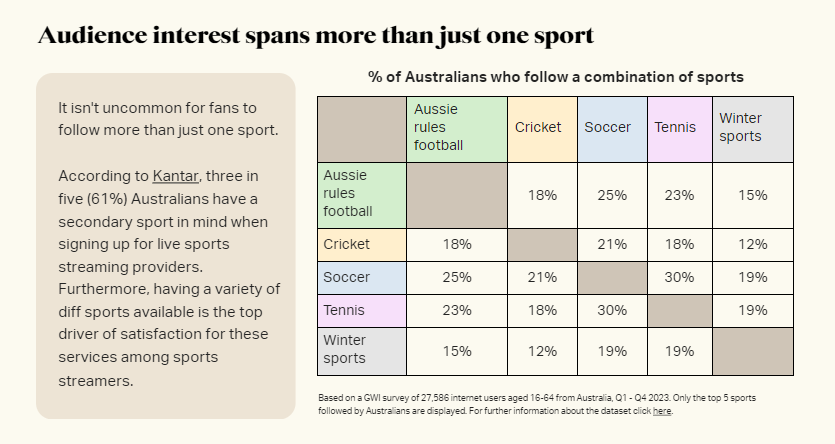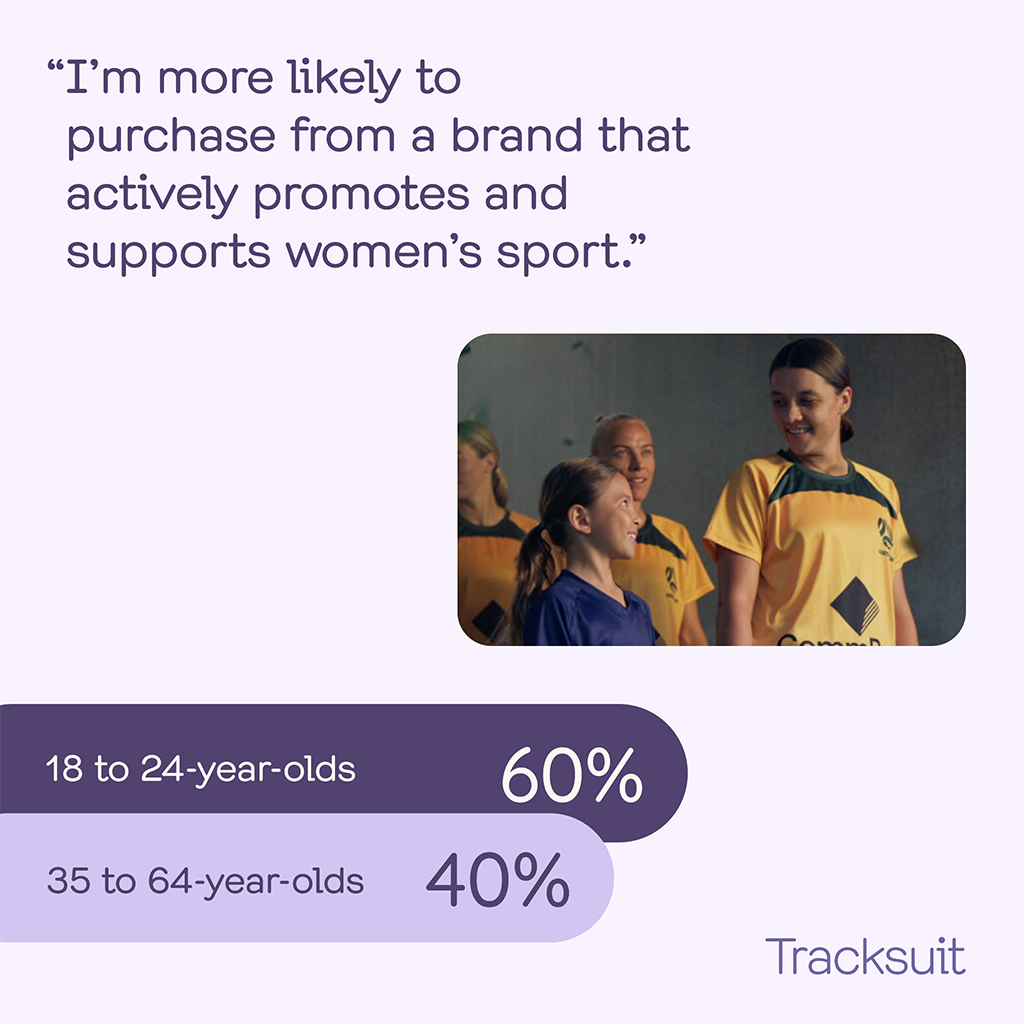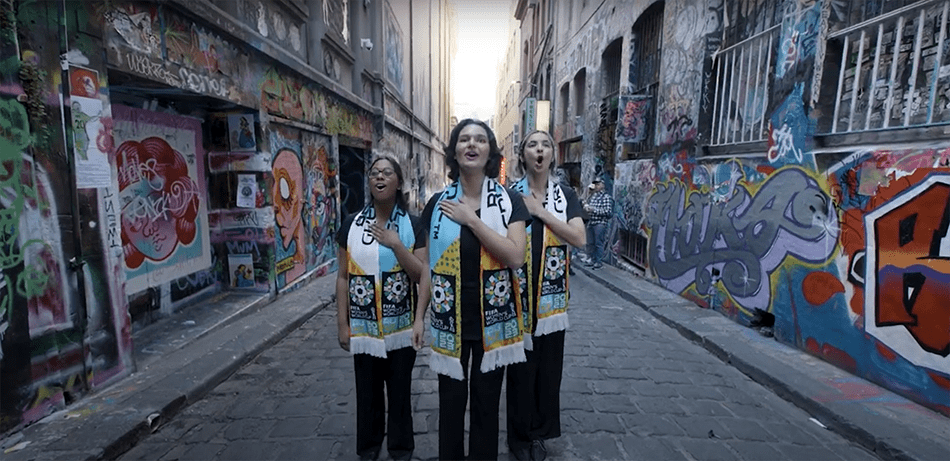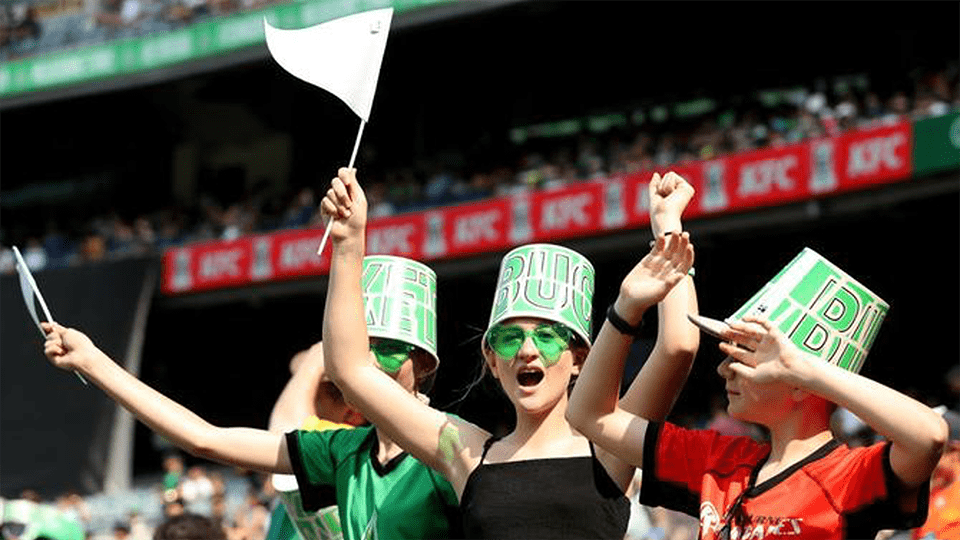In this edition of Spotlight Australia, WARC Asia Editor Rica Facundo examines how the sports marketing landscape is changing and why going beyond a logo badging exercise enables brands to reach new audiences in new and effective ways.
This article is part of a Spotlight series on sports and sponsorships in Australia. Read more
Sport has long been a cornerstone in Australia, embedded in the lives of Aussies and an integral marketing lever for driving mass reach to passionate audiences.
Last year, the country had a landmark year in sport with the 2023 FIFA Women's World Cup smashing records in both the sport and marketing arena – 32% of Australians surveyed by Tracksuit believed it was the biggest brand moment of the year, even surpassing cultural juggernauts The Barbie Movie and Taylor Swift.
It’s a testament to how the sports marketing landscape is changing, providing new ways for brands to reach new audiences effectively. This much was clear when I traveled multiple times through Australia last year. Matildas fever was everywhere, and the changing nature of sport bubbled up in every conference that I attended.
So, for this Australia spotlight, we look into how brands can move beyond the traditional logo badging exercise in a way that delivers short- and long-term success. Given the immense sporting spirit of Australians, the opportunities to innovate are endless.
Looking ahead, the 2024 Olympics is fast approaching, making it imperative for marketers to understand how Aussies plan to tune in and participate.
The long and short of sport
Sporting events are lucrative opportunities for marketers to get their brands in front of a mass audience, but they come with a hefty price tag. Given the economic uncertainty in the last few years, more stakeholders are questioning their value and ability to deliver ROI.
Although it’s always tempting to focus on short-term gains, our contributors, such as Kantar’s Lesley West and Colin MacArthur, agree that investing in sport is a “marathon” and not a “sprint” and that, when done properly, it can get a “nation running alongside you.” Case in point: the overwhelming support for the Matildas and women’s sport.
“Marketers getting it right are placing sponsorship in the realm of building upper-funnel metrics first and then conversion, all through building emotive clarity and stoking fan love.”
Their article provides an effectiveness framework of how winners use sponsorship to invest in future success.

Suncorp is one such legacy sponsor in Australia that has become synonymous with the industry. Aside from traditional naming rights across stadiums and teams, the brand has seen first-hand how investing in values-based brand-building efforts has also yielded results in the short term.
Mim Haysom, CMO/EGM of brand and customer experiences, says, “Our shorter-term metrics revolve around our campaign KPIs, such as traffic to our channels, response rates, social media engagement, and new business opportunities. We see quite quickly that when we get a really good impact in consideration, it translates to customers engaging with the brand to explore our products and services.”
Behave like a culture brand to expand reach and relevance
Traditionally, when it comes to sports, brands have needed large budgets to get permission to play in this space and were constrained by the limitations of the contract. But one way to innovate is to behave less like a sport brand and more like a culture brand, stoking fan engagement and tapping into the related conversations associated with sport to strengthen emotional connection.
This is especially critical given the clutter in Tier 1 Australian sport. EssenceMediacom’s Dan Collier-Hill writes that brand recall is down by 29%, asking marketers to think for a moment: “How many brands can you remember from the last sports game you watched?”.
Thinking “fan-first” enables marketers to extend the reach of their campaigns and find connections within their audience’s diverse passion points in a way that cuts through the clutter.
For example, our Spotlight infographic highlights how audience interest spans more than just one sport. According to Kantar, three in five Australians have a secondary sport in mind when signing up for live sport.

Suncorp found a similar connection when expanding the brand’s Team Girls program, which initially was very netball-first in its approach.
Haysom says, “People tend to be interested in sports and athletes more broadly. Starting with one sport in netball and then expanding our support into other women’s sports has really helped Suncorp’s association and brand perception.”
Love for sports also translates into love for the nation. By tapping into deeper cultural narratives, sports brands can supercharge the intense emotions already associated with sport. Case in point: The overwhelming support of the FIFA Women’s World Cup.

Tracksuit surveyed a nationally representative sample of more than 4,000 Australians in July 2023 and found that 42% were more likely to purchase from a brand that actively promotes and supports women’s sports over brands that do not. Gen Z was more strongly opinionated on this compared to older generations.
“The results of the data are clear: businesses that align themselves with women’s sports can grow awareness, consideration and preference with consumers,” says Tracksuit’s Elly Strang about how the Matildas’ success offers a path to reinventing sports marketing.
Tapping into broader cultural narratives can also be the catalyst to unleash the power of sonic branding to bring communities together and drive fame.
TBWA's Ted Helliar writes that the launch of the Unity Beat was the key earned moment for the FIFA Women’s World Cup.
“It’s a unifying chant designed to transcend team allegiances and embody the spirit of celebrating greatness and inclusiveness… representative of how far the women's game has come, integrated into every game of the tournament at half-time, unifying the crowd as one.”

Source: TBWA FIFA WWC case study
The sizeable opportunity of the casual fan
One of the reasons why the rules of sports marketing are becoming more about cultural participation is because the barriers to entry to engage a broader audience have never been easier.
“As sports viewership changes, more casual sports fans jump on the bandwagon. For any creative person, regulations don't create barriers but opportunities to play with formats and get attention in exciting ways,” says TikTok’s Denny Handlin.
His article highlights four key trends that empower brands less traditionally linked with sports to play by offering casual fans a wide array of content beyond mainstream sports coverage.
Going after this sizeable audience base of non-traditional football fans was key to selling over 1.5 million tickets for the FIFA Women’s World Cup tournament.
TBWA’s Ted Helliar provides a case study on how FIFA was able to elevate the World Cup beyond a football tournament and into a socio-cultural movement.
Authentic integration in branding and ad placements
Given the increasing importance of fan engagement, what does this mean for the role of the brand and the power of creativity in supercharging the effectiveness of sports marketing?
“It seems obvious, but the best way to ensure your brand resonates with sports fans is to ensure it’s a natural fit for the environment in which it will appear… The key to success is to imbue the brand’s personality into the sponsorship and find common ground with the fans,” writes Ogilvy’s Oliver Wilson.

He cites KFC’s longstanding association with Australian Cricket, “a relationship that’s not only made the brand synonymous with the game but created one of the most valuable distinctive brand assets for the brand—the KFC bucketheads.” The brand celebrates Aussie cricket fans’ larrikinism and penchant for wearing costumes while demonstrating the fun and uninhibited enjoyment it stands for.
Authentic integration into culture is also a principle for effective ad placement.
Seven’s Ashley Spinks writes, "TV commercial spot buys, whilst effective for brand building, inhibit a brand's ability to imbue itself within the sport; this needs to come from authentic integration”.
“It signifies a seamless blend where the brand's presence enhances the sport experience rather than disrupting it.”
Seven’s article provides evidence that when contextually relevant creative is used, viewers perceive the brand as a more natural fit (+2%) and feel more favourable towards it due to the sponsorship (+7%). In line with increased brand favourability, there was an observed lift in the top two box (T2B) brand consideration by +9% for sponsors that leveraged contextually relevant creative.
If sports marketing is going beyond the badge, then the most effective place to start is in the heart of a nation that lives and breathes the game, uniting fans under a banner of shared excitement and camaraderie.
Read more in this Spotlight series
Sport and ROI: How Suncorp Australia develops meaningful and effective sport partnerships from the ground-up
Mim Haysom
Suncorp
Field to ForYou page: How TikTok is shaping modern sports culture
Denny Handlin
TikTok
Rules of the game: Achieving peak performance and ROI in sports sponsorship
Lesley West and Colin MacArthur
Kantar
How KFC uses brand sponsorship to enhance the sporting experience
Oliver Wilson
Ogilvy
How streaming is redefining sports marketing in Australia
Ashley Spinks
Seven
How FIFA Women’s World Cup sold 1.5m tickets and became a cultural phenomenon
Ted Helliar
GMR by TBWA
How the success of the Matildas offers a path to reinventing sports marketing
Elly Strang
Tracksuit
The current state of attention in Australian sport
Dan Collier-Hill
EssenceMediacom
More than a match: How Aussies cultivate their love for sport
Spotlight infographic
WARC

